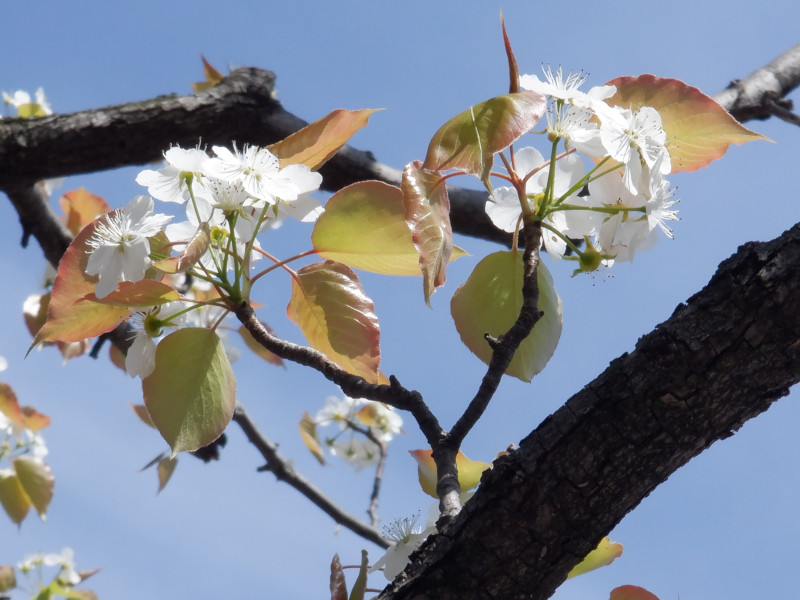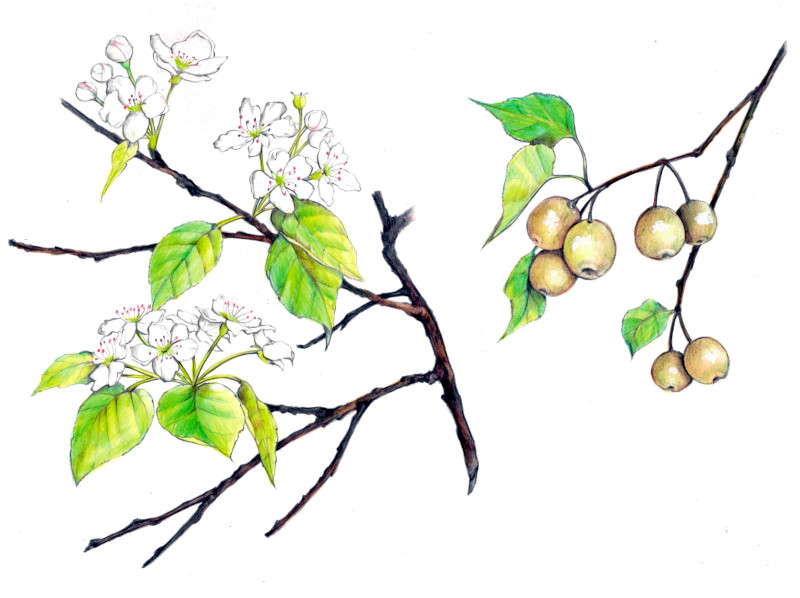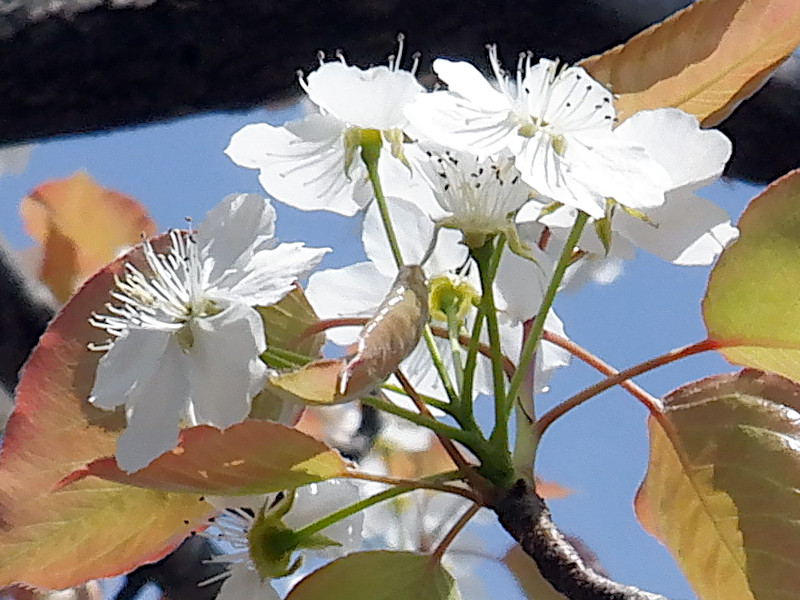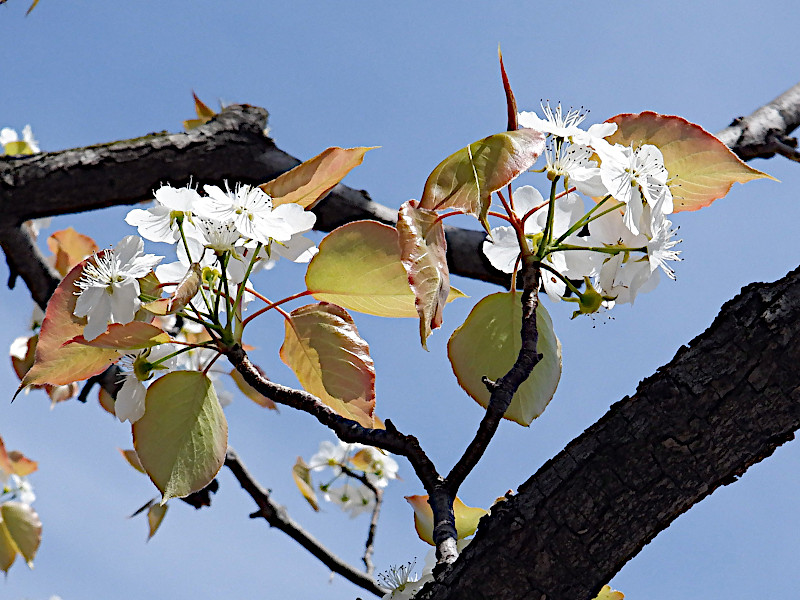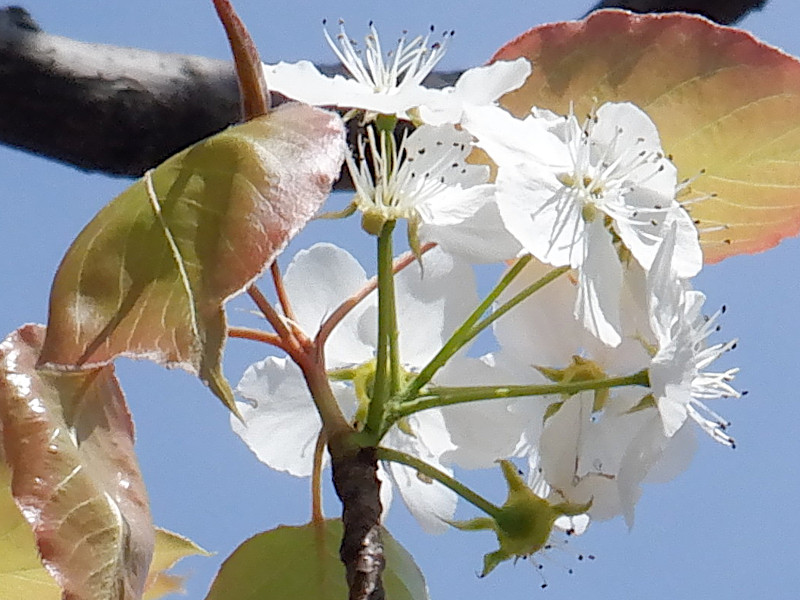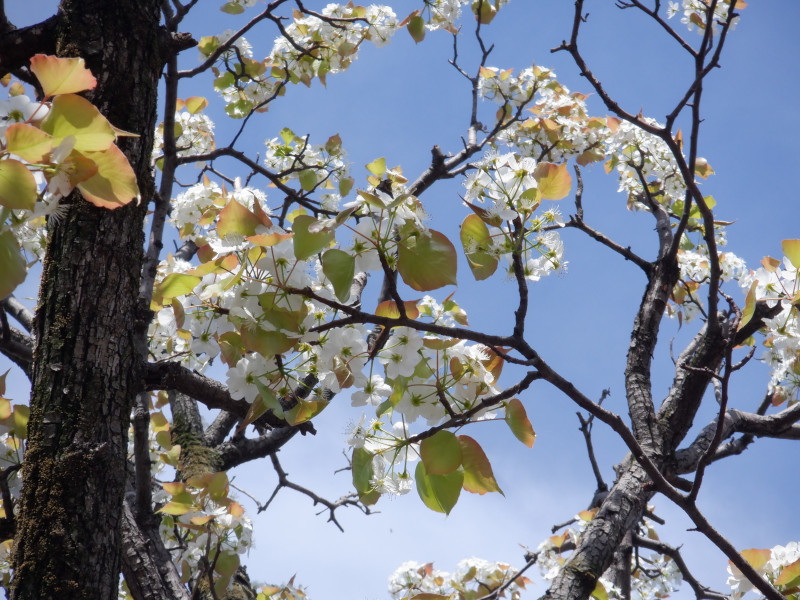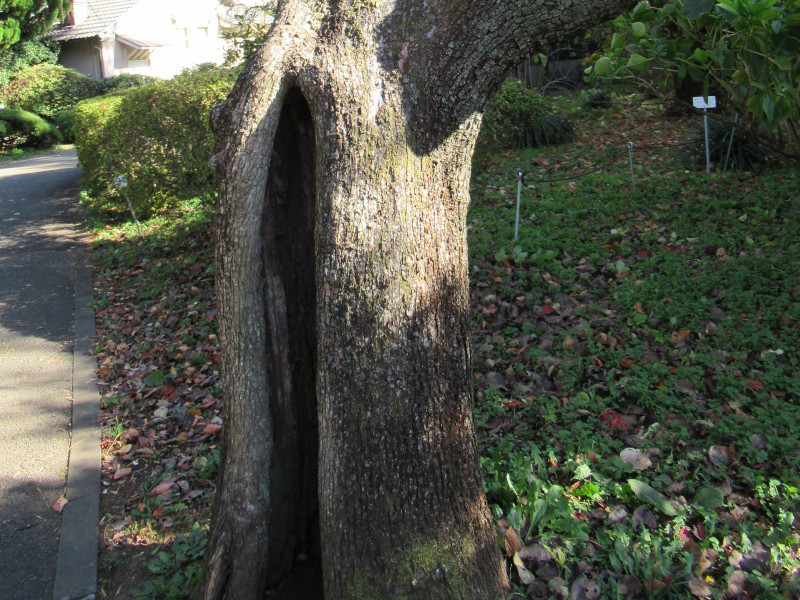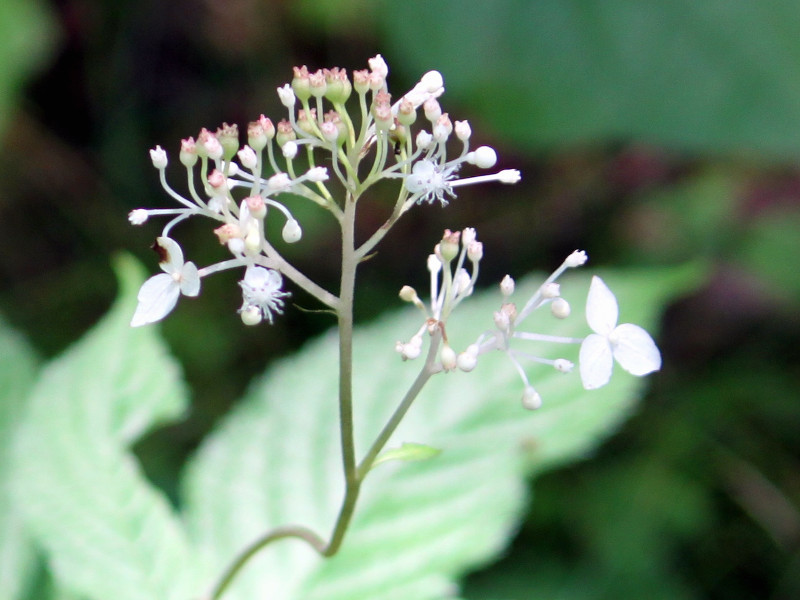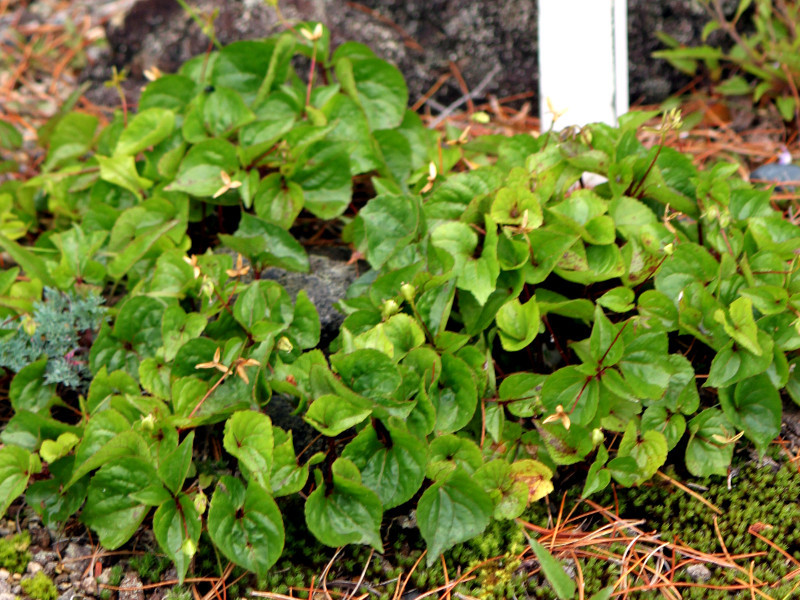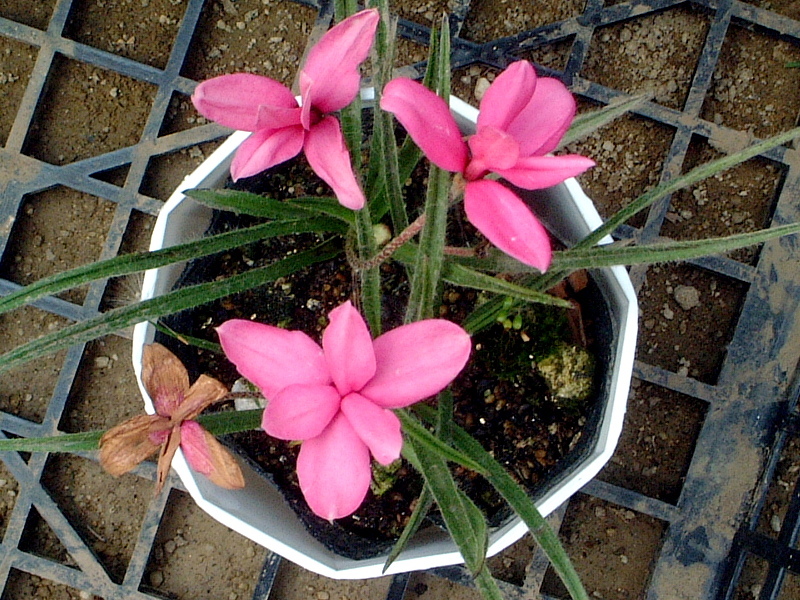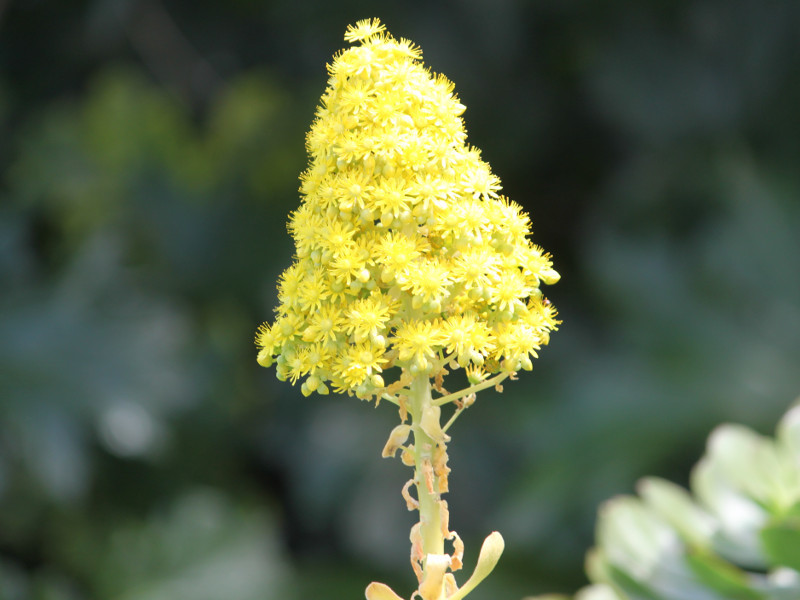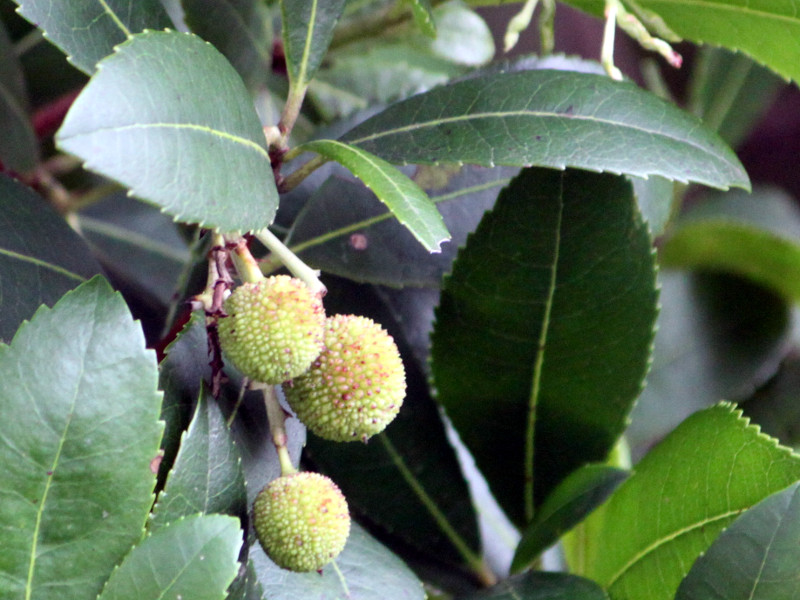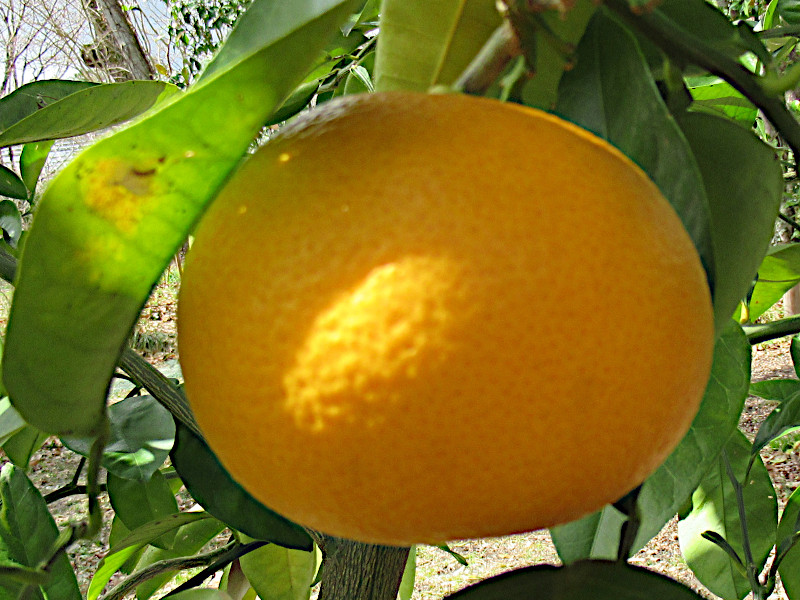Pyrus pyrifolia
- Flower namePyrus pyrifolia
- Scientific namePyrus pyrifolia var. pyrifolia
- AliasSand pear, 山梨
- Place of originChina
- Place of floweringLow mountains
- Flowering seasonApril, May
What is Pyrus pyrifolia
Pyrus pyrifolia or Sand pear (scientific name: Pyrus pyrifolia var. pyrifolia) is a deciduous broad-leaved tree of the family Rosaceae, native to China. It is believed to have been introduced to Japan and then gone wild. It is native to Honshu, Shikoku, and Kyushu. It is a wild species that is the original species of Japanese pears and is not suitable for food, but from now on it will be produced, such as the Nijuseiki(20 century).
To the original species of Japanese pear
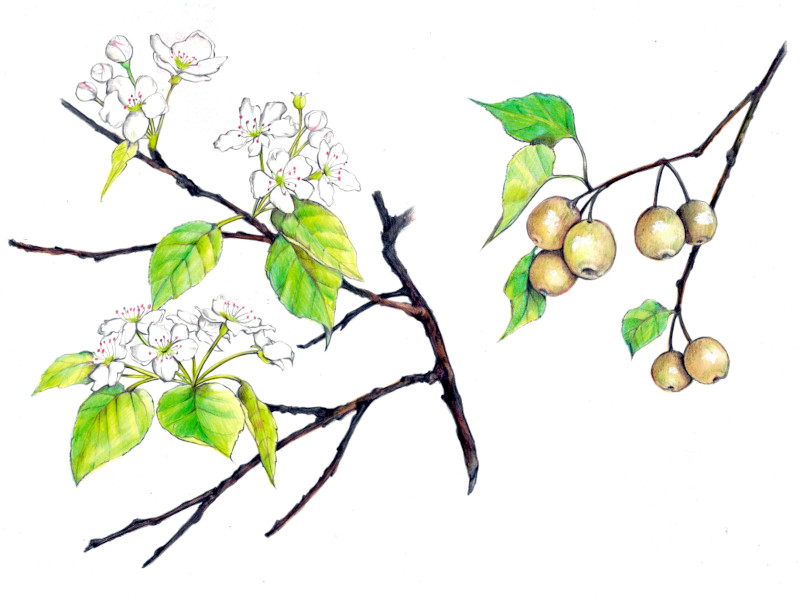
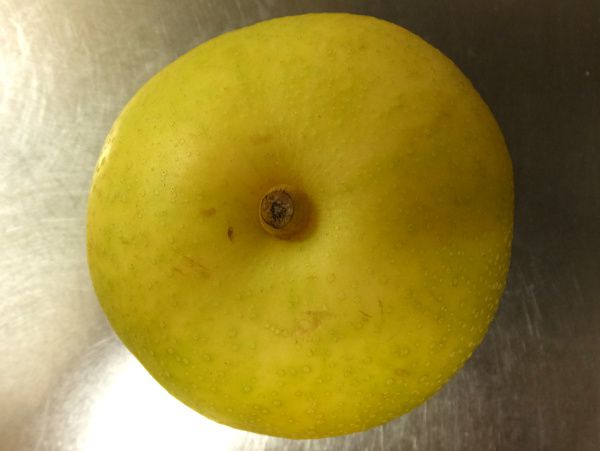
Pyrus pyrifolia Flower and Fruit (left) → 20th Century Pear (right)
Pyrus pyrifolia itself is not suitable for eating raw, but it became the parent of the Japanese pear, the 20th Century Pear, etc.
Common name: Pyrus pyrifolia or Sand pear, scientific name: Pyrus pyrifolia var. pyrifolia, pyrifolia, also known as Japanese pear (Yamanashi), Sand pear, taxonomy: plant kingdom dicotyledonous rosaceae, species of pears, height: 5 to 15 m, inflorescence: alternate, leaf length: 6 to 12 cm, leaf width: 6 to 12 cm 4-6 cm, Leaf shape: Oval, Leaf margin: Serrated, Inflorescence: Scattered inflorescence, Flowering season: April-May, Flower color: White, Flower diameter: 2.5-5 cm, Number of petals: 5, Number of stamens: 20, Anther color: Purple, Number of columns: 5, Fruit stage: September-October, Fruit type: Pear-shaped, Fruit shape: Spherical, Fruit diameter: 2-3 cm, Fruit edible: Hard and sour and inedible, Flesh color: White, Use The base wood, the bark is a dye.
